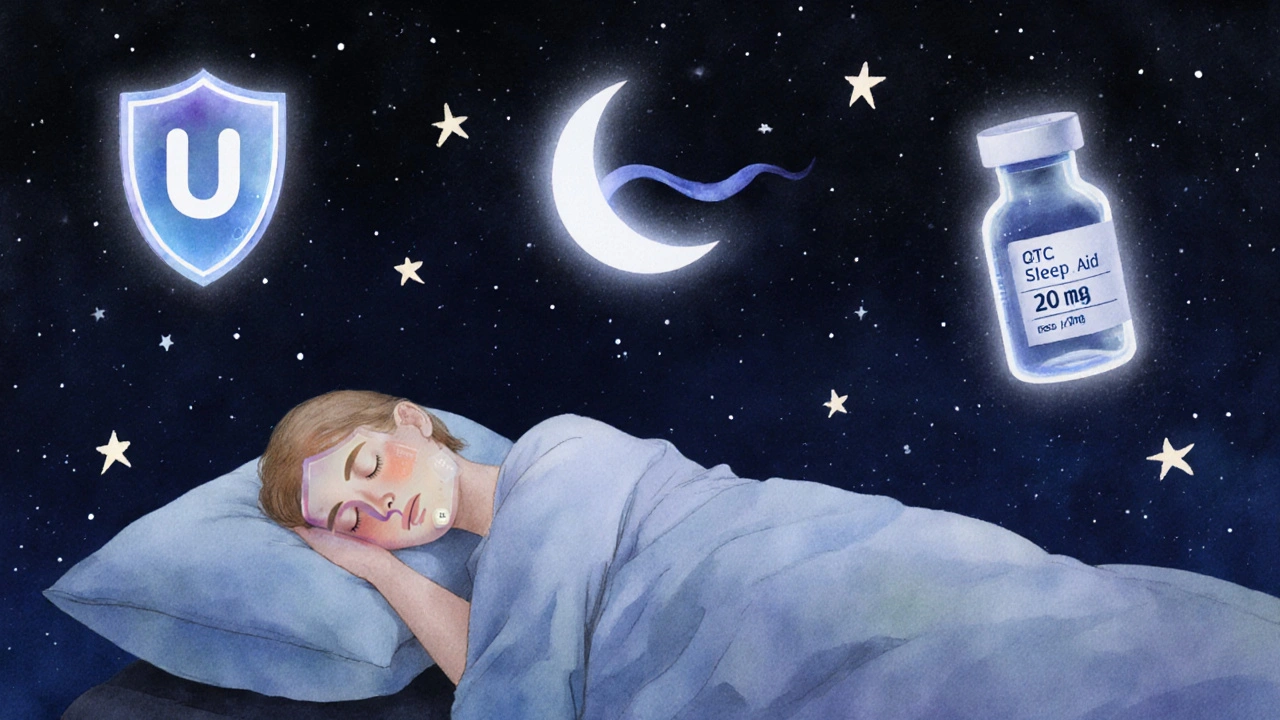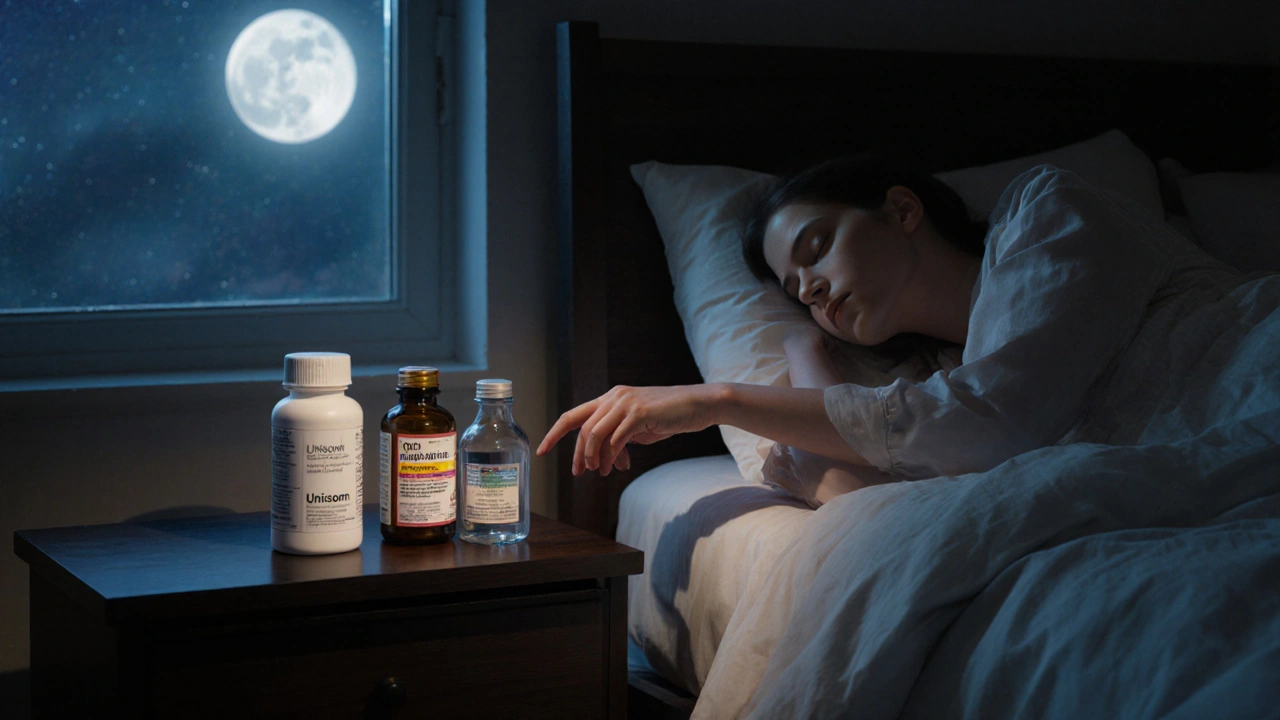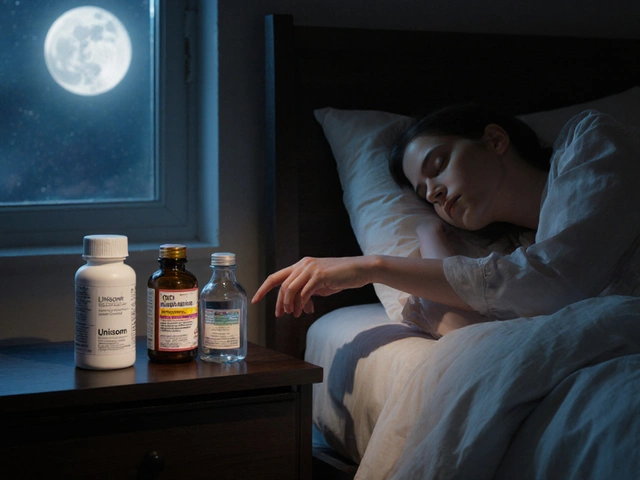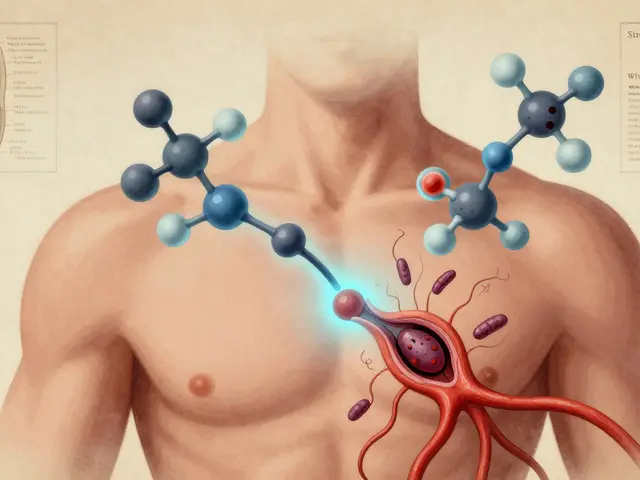Sleep Aid Comparison Tool
Choose Your Sleep Concern
Preferred Sleep Aid Type
Age Group
Recommended Sleep Aid
Unisom is a brand‑name over‑the‑counter (OTC) sleep aid whose active ingredient is diphenhydramine, a first‑generation antihistamine that induces drowsiness by blocking histamine H1 receptors in the brain. People reach for Unisom when they need a quick, short‑term solution for occasional insomnia, jet lag, or night‑time anxiety. While it works for many, the landscape of sleep‑aid options is broader, and each alternative brings its own strengths and drawbacks. This guide walks through the most common rivals-doxylamine succinate, melatonin, valerian root, magnesium, and prescription agents like zolpidem-so you can match the right product to your sleep pattern, health profile, and lifestyle.
How Diphenhydramine Makes You Sleep
Diphenhydramine diphenhydramine crosses the blood‑brain barrier and blocks H1 histamine receptors, which normally keep us alert. By silencing this wake‑promoting signal, the drug produces a sedative effect that typically starts 30‑60 minutes after ingestion and lasts 4‑6 hours. The same mechanism also explains why it can cause dry mouth, blurred vision, and next‑day grogginess-classic anticholinergic side effects.
Key Alternatives - Quick Snapshot
- Doxylamine succinate another first‑generation antihistamine (brand names Unisom SleepTabs, Nighttime Sleep Aid) - slightly longer onset, stronger sedation.
- Melatonin a hormone naturally released by the pineal gland to regulate circadian rhythm - helps reset sleep‑wake cycles, minimal hangover.
- Valerian root an herbal extract that enhances GABA signaling - mild calming effect, popular in Europe.
- Magnesium citrate an essential mineral that relaxes muscles and supports neurotransmitter balance - beneficial for restless leg syndrome.
- Zolpidem a prescription non‑benzodiazepine hypnotic (brand name Ambien) - fast‑acting, high efficacy, requires medical oversight.
Deep Dive: Comparing Core Attributes
| Attribute | Unisom (diphenhydramine) | Doxylamine succinate | Melatonin | Valerian root | Magnesium citrate | Zolpidem |
|---|---|---|---|---|---|---|
| Mechanism | H1 antihistamine (central) | H1 antihistamine (central) | Pineal hormone mimic | GABA‑enhancement | Muscle relaxation & neurotransmitter support | GABA‑A receptor agonist |
| Typical dose | 25‑50mg oral | 25mg oral | 0.5‑5mg oral | 300‑600mg extract | 200‑400mg oral | 5‑10mg oral |
| Onset | 30‑60min | 45‑90min | 30‑120min (depends on formulation) | 45‑60min | 60‑120min | 15‑30min |
| Duration | 4‑6hrs | 6‑8hrs | 4‑8hrs (varies) | 4‑6hrs | 6‑8hrs | 6‑8hrs |
| Common side effects | Dry mouth, dizziness, next‑day grogginess | Similar, often more pronounced sedation | Day‑time sleepiness, vivid dreams | Headache, mild GI upset | Diarrhea, stomach cramps | Complex sleep behaviors, memory loss |
| OTC status (US) | OTC | OTC | OTC (dietary supplement) | OTC (herbal supplement) | OTC (dietary supplement) | Prescription only |
| Best for | Occasional insomnia, travel‑related sleep loss | Heavy‑duty night‑time drowsiness | Shift work, jet lag, mild insomnia | Stress‑related sleep trouble | Restless legs, magnesium deficiency | Chronic insomnia under physician care |

When Unisom Shines - Ideal Use Cases
Unisom is most effective when you need a short, predictable sleep window-think a 6‑hour flight or a one‑night study session. Its relatively low cost (often under $5 for a bottle of 100 tablets) and easy availability make it a go‑to for people who don’t want to schedule a doctor’s visit. However, because diphenhydramine’s anticholinergic load can accumulate, it’s not recommended for nightly use by older adults or anyone on medications that also cause sedation.
Choosing an Alternative - Decision Framework
Below is a quick decision tree you can run in your head:
- Do you need a quick‑onset, short‑duration aid? If yes, consider Unisom or Zolpidem (prescription).
- Are you sensitive to antihistamine side effects? If yes, switch to melatonin or valerian.
- Do you have a medical condition (e.g., hypertension, glaucoma) that clashes with anticholinergics? Choose magnesium or melatonin.
- Is your insomnia chronic ( >3months )? Talk to a clinician; prescription options like zolpidem may be warranted.
This framework helps you avoid trial‑and‑error and reduces the risk of unwanted grogginess.
Safety Tips Across All Sleep Aids
- Never mix multiple antihistamines - the anticholinergic burden can become dangerous.
- Limit use of diphenhydramine or doxylamine to ≤2weeks without medical advice.
- Start melatonin at the lowest dose (0.5mg) to gauge tolerance.
- Check magnesium levels if you’re already taking a high‑dose supplement; excess can cause diarrhea.
- For prescription hypnotics, always follow the exact dosage and avoid alcohol.
Related Topics Worth Exploring
Understanding sleep basics provides context for these choices. You might next read about circadian rhythm disorders, sleep hygiene best practices, or how caffeine impacts nighttime rest. Each of those topics builds on the mechanisms outlined here and helps you craft a holistic sleep‑improvement plan.

Frequently Asked Questions
Can I take Unisom with alcohol?
Mixing diphenhydramine with alcohol intensifies sedation and can impair breathing. It’s safest to avoid alcohol entirely on nights you plan to use Unisom.
Is melatonin better for long‑term use than Unisom?
Melatonin mimics a natural hormone and generally has fewer anticholinergic side effects, making it a preferred long‑term option for many. However, its efficacy depends on timing and individual circadian sensitivity.
What’s the risk of dependence with Unisom?
Physical dependence on diphenhydramine is rare, but psychological reliance can develop if you use it nightly for months. A break after two weeks of regular use is recommended.
Can magnesium help with insomnia?
Magnesium supports muscle relaxation and GABA activity, which can smooth the transition to sleep, especially if you have a deficiency. It works best when taken 30‑60 minutes before bed.
Why does Unisom sometimes cause daytime drowsiness?
Because diphenhydramine’s half‑life is around 9‑12hours, residual drug can linger in the bloodstream, especially if you take a higher dose or have slower metabolism. Opt for the lowest effective dose or switch to a shorter‑acting alternative.








Write a comment
Your email address will be restricted to us